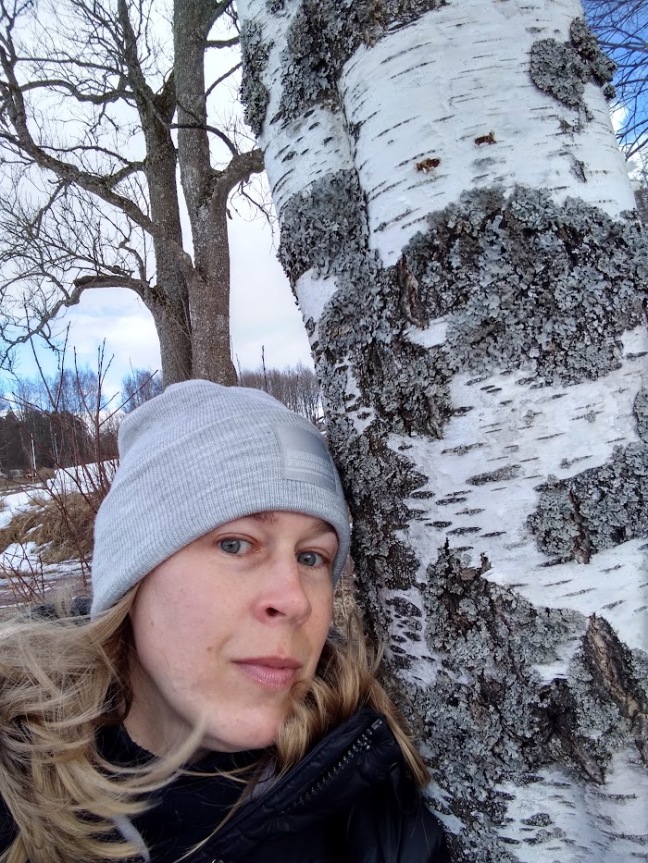The last time that I wrote, the maple leaves were turning orange and gold and the air was crisp with the promise of autumn hikes and bundled-up forest picnics (of which we enjoyed quite a few). Now, the plum trees are in bloom, and I am eager to get up into the mountains again.

I have finally been able to fully focus my attention on the research I did in Finland last spring, and I want to share a few work-in-progress images from my studio. I am creating a hand-cut paper “Lichen-scape” based on species that I observed, sketched, and photographed in the snow at Fiskars.
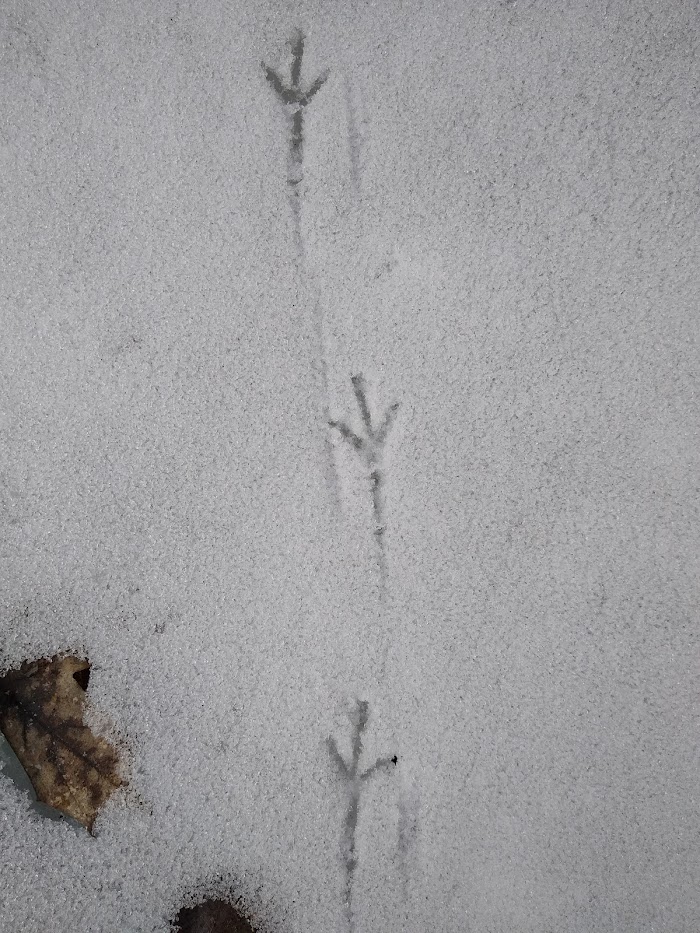

I have been immersed back in that magical time of winter turning to spring as I work from the sketchbooks, photographs, and notes I took while the April snow fell outside my window. The lichens—embedded in the ice or pillowed atop new snow, grabbed my attention–precious micro-objects in a stark wintery landscape. Turns out that winter is a popular time for botanists to study lichens; the only issue if they are completely covered in snow.

The famous Swedish botanist Carl Linnaeus (1707-1778), deemed lichens “the poor trash of vegetation.” Our understanding has come a long way since then.
The biology of lichens is fascinating. Each lichen represents a symbiotic (cooperative) relationship between fungi and algae, with or without cyanobacteria. (Lest you are wondering, Oxford English Dictionary defines cyanobacteria as: “a division of microorganisms that are related to bacteria but are capable of photosynthesis. They…represent the earliest known life on earth.”) So each time we see a “lichen,” it is actually a micro ecosystem rather than simply an individual organism. There are 14,000-20,000 known species today. Different species prefer to grow on different substrates (surfaces), for instance, the ground (soil, mosses, sand, fallen logs), rocks, and trees.



They can live in extreme environments, withstanding radiation and extreme temperature swings. Unlike other plants, however, lichens lack a filtering system. They absorb pollutants with no way to expel them. Scientists monitor lichens as bio-indicators of air quality.
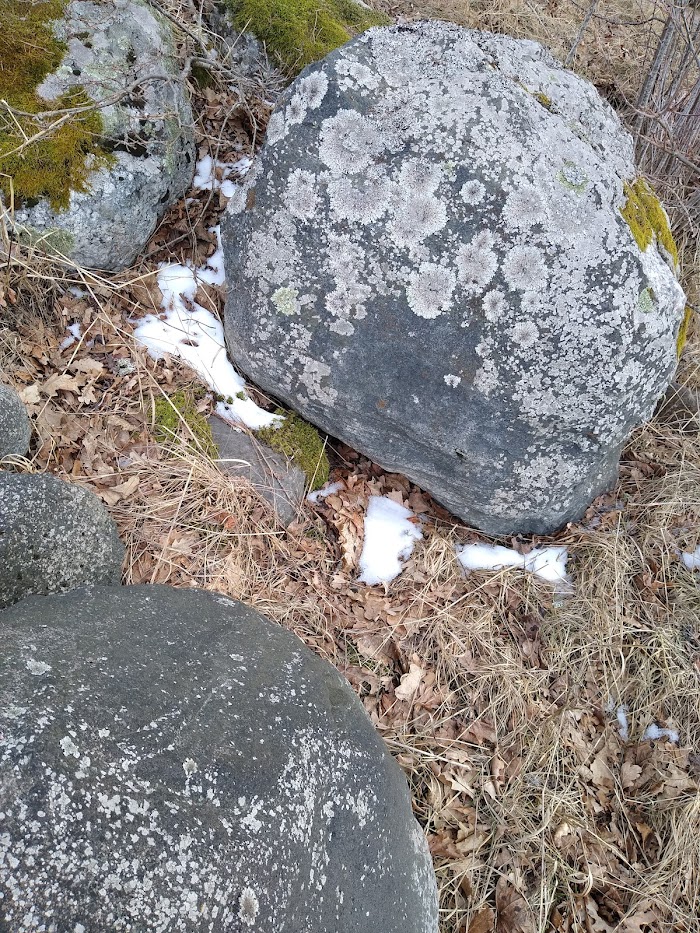
Here are a few images from my cutting mat and studio table to give a sense of scale…it is an ongoing fun challenge to figure out how best to cut these tiny complex structures with my x-acto knife. I have been finding tweezers to be helpful. I am also making good use of my botanist’s loupe.

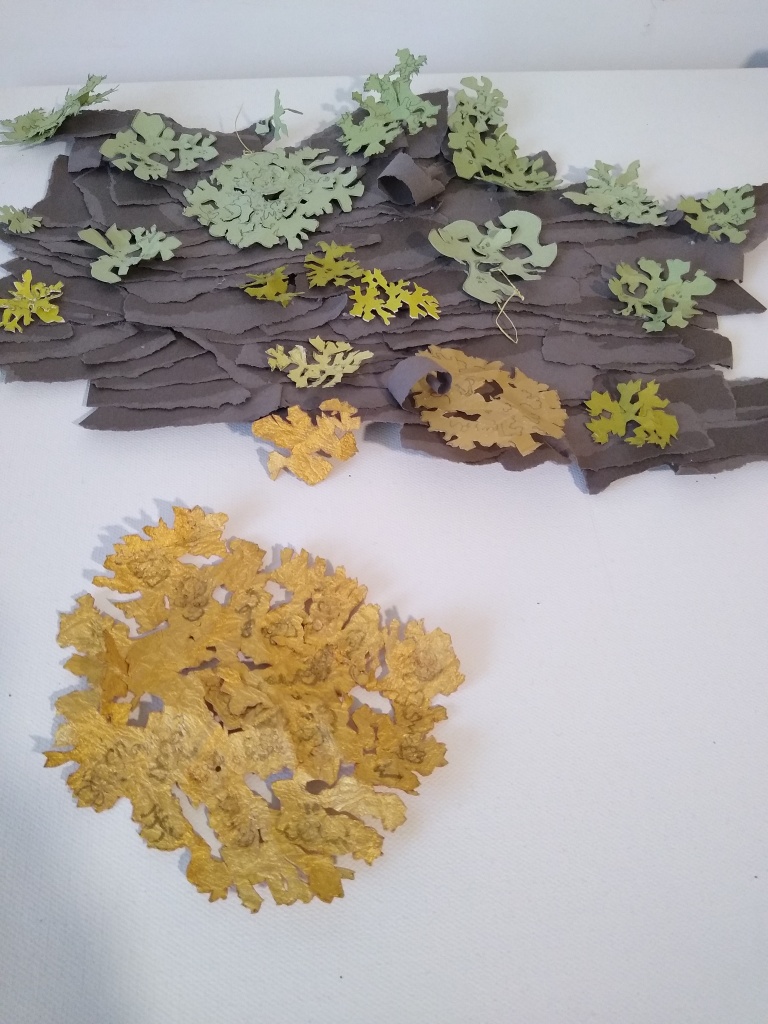
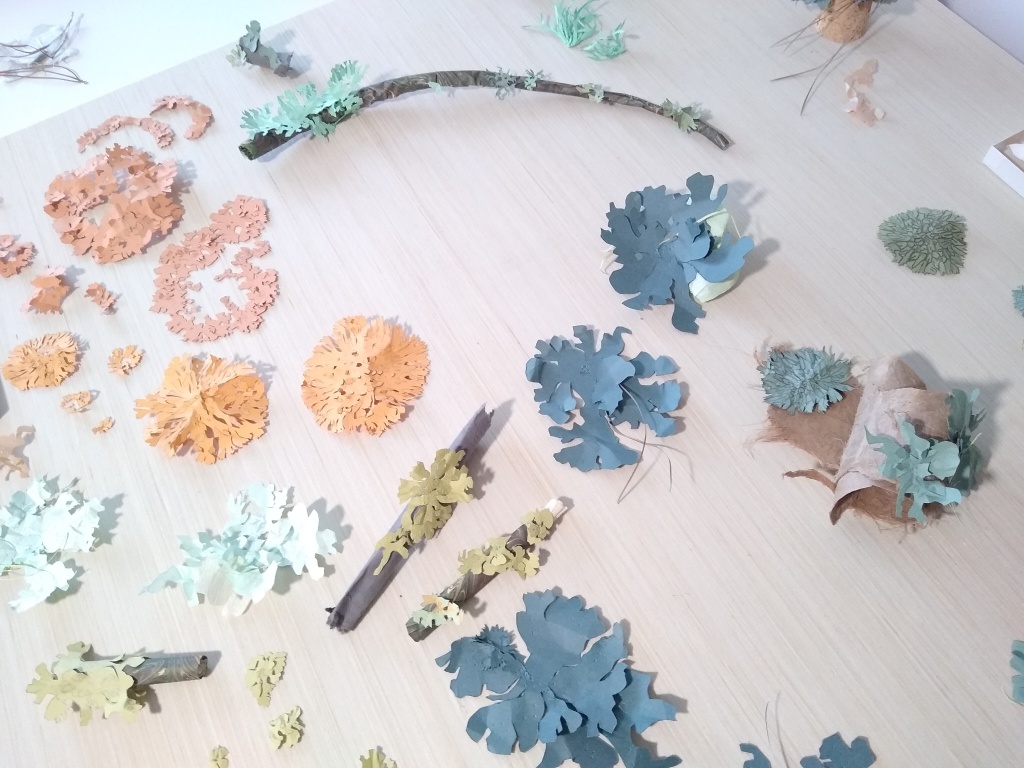
Here are just a few images from Finland to give a sense of the variety and intricacy of lichen species that I observed.
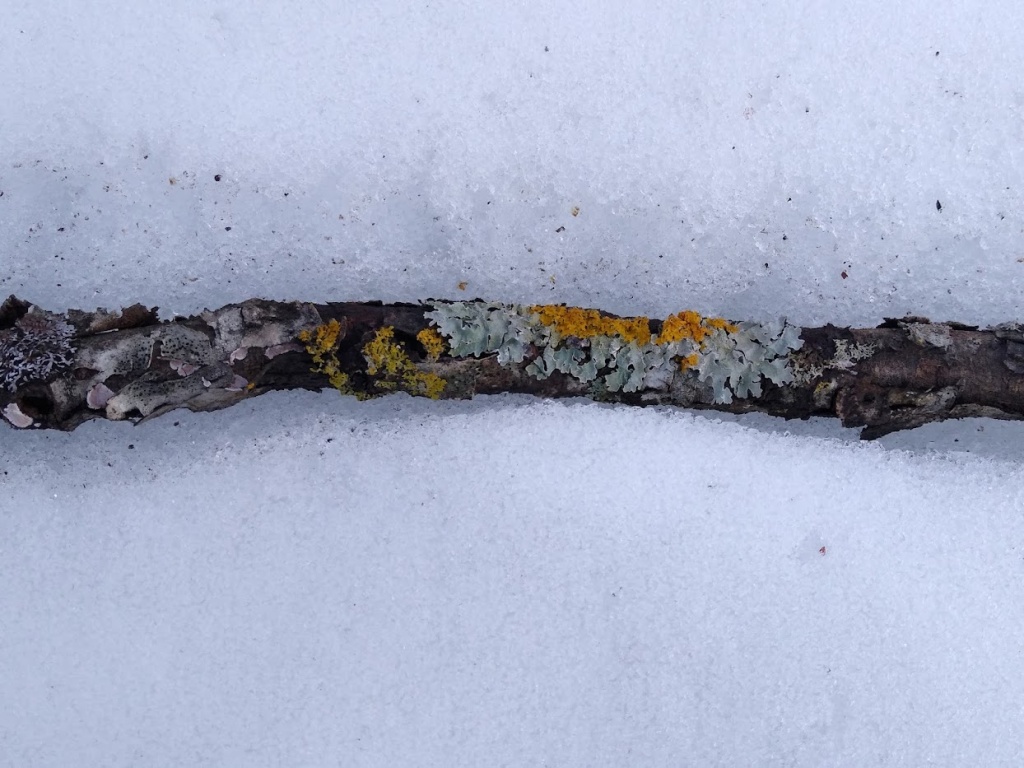


I have several other bodies of work from my time in Finland percolating…It was such a productive and meaningful time. I am reading all I can get my hands on about the science of ice and snow in the meantime.
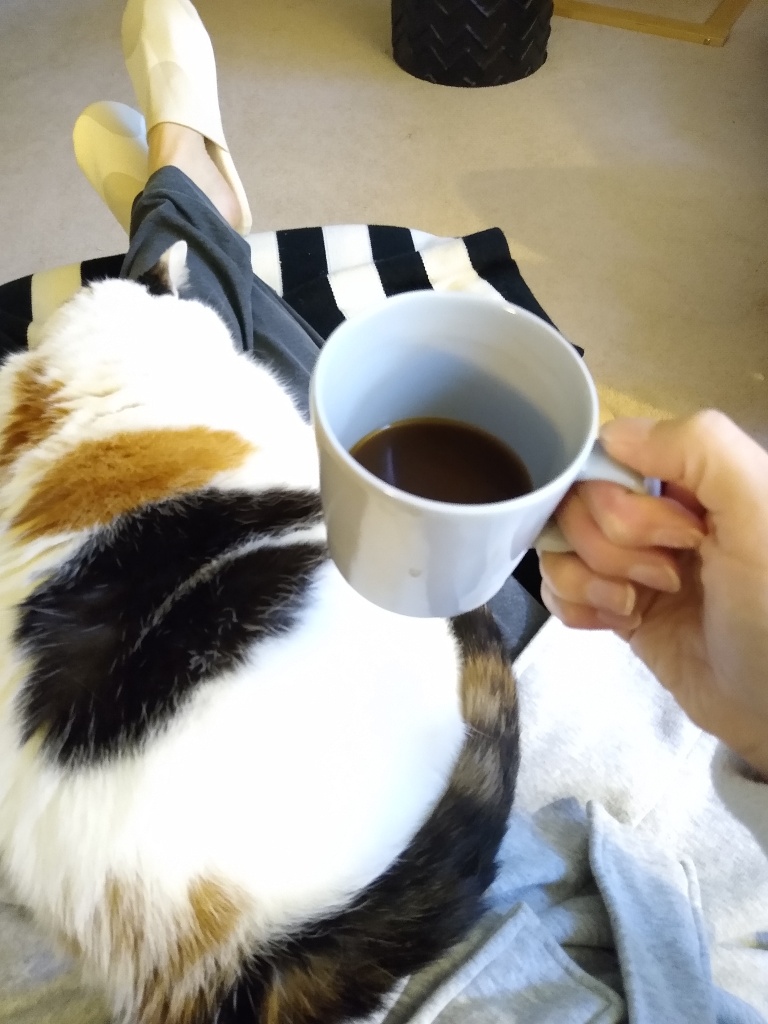
In other studio news, I am thrilled to be preparing for a month-long artist residency in Norway this spring. My project is funded by an Artist Support Grant from the North Carolina Arts Council and the Arts and Science Council. More news to follow.

Garden-wise, my plan this year is to focus on fresh herbs for the kitchen garden, with a few new flowers (Queen Anne’s lace), red clover, and a few new plants for the pollinator garden. Today’s high of 79 degrees F (26.11 degrees Celsius) makes the garden season seem imminent, though March is often quite chilly here.

